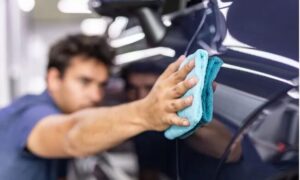Computer numerical control machines, or CNC machines, are world-renowned tools for providing products with accurate and well-defined cuts, helping to create high-quality products. However, knowing the right types of CNC machines for your prototype manufacturing needs is crucial. So, what are the 5 common types of CNC machines? Below are the top 5 types of CNC machines for your prototype manufacturing needs.
1. CNC Milling Machines
CNC milling machines are the most versatile CNC machines you will ever encounter. They work best to remove unnecessary material from the workpiece using rotary cutting tools, providing the desired outcome. These machines help cut non-identical material and are commonly used for complex and detailed geometries.
Functions of its main components:
Bed: The bed is the base of the CNC milling machines. It assists in keeping all the parts in place and united.
Worktable: The worktable enables you to move the workpiece around to be positioned correctly.
Spindle: The spindle, powered by a motor, spins fast enough to cut through any material.
Tool Holder: Stabilizes the cutting tool and is connected to the spindle, allowing tool changes.
Control Panel: The control panel is where the operator inputs commands, consisting of a keyboard, screen, and various buttons.
Cooling System: Helps cool down the tool and removes dirt.
2. CNC Lathes
CNC lathes are another type of CNC machine that can create cylindrical shapes. These machines are great for giving the product a symmetric shape. Thanks to innovation, they also have various functions like tapping, drilling, etc.
Functions of its main components:
Tailstock: Helps keep heavy or long parts of the material in place and includes a spindle that holds the tools securely.
Headstock: Contains the spindle that holds the tool steadily.
Tool Turret: Secures the cutting tools used to shape the workpieces.
Chuck: Grips and stabilizes the workpiece during cutting.
Cross Slide: Allows the tool to move and cut the required area of the workpiece, moving parallel and perpendicular to the workpiece.
3. CNC Plasma Cutters
This type of CNC machine excels at cutting stiff and tough materials. CNC plasma cutters cut aluminum and steel with extremely hot plasma arcs.
Functions of its main components:
Plasma Torch: The key component that cuts metal using plasma air.
Power Source: Provides the necessary electricity for the plasma arc.
Gas Delivery System: Delivers gas to the torch, maintaining the plasma and removing hot metal.
Cutting Table: Made of non-conductive material to avoid electrical issues.
CNC Software: Controls the machine’s functions and productivity, allowing the operator to make changes or give instructions.
Exhaust System: Removes any smoke generated during the cutting process.
4. CNC Routers
These CNC machines are excellent for cutting and carving plastic, metal, and wood, helping achieve precision and detail.
Functions of its main components:
Cutting Tool: Can be adjusted according to the material being worked on and attached to the spindle.
Dust Collection System: Cleans dirt and collects dust and debris from the cutting area.
5. CNC Waterjet Cutters
The CNC waterjet cutter uses high-pressure water to cut metal, stone, glass, and other materials.
Functions of its main components:
Intensive Pressure Pump: Controls the water pressure, capable of reaching up to 90,000 psi, driven by a diesel engine or electric motor.
Abrasive Delivery System: Delivers abrasive particles to the waterjet nozzle, consisting of a feed tube and a hopper, with a control valve directing the flow of abrasives.
CNC Controller: Allows the operator to provide instructions to the machine.
Conclusion
The content above outlines the five common types of CNC machines you can use for prototype manufacturing and other needs. Read through the details from start to finish before making your choice.



































